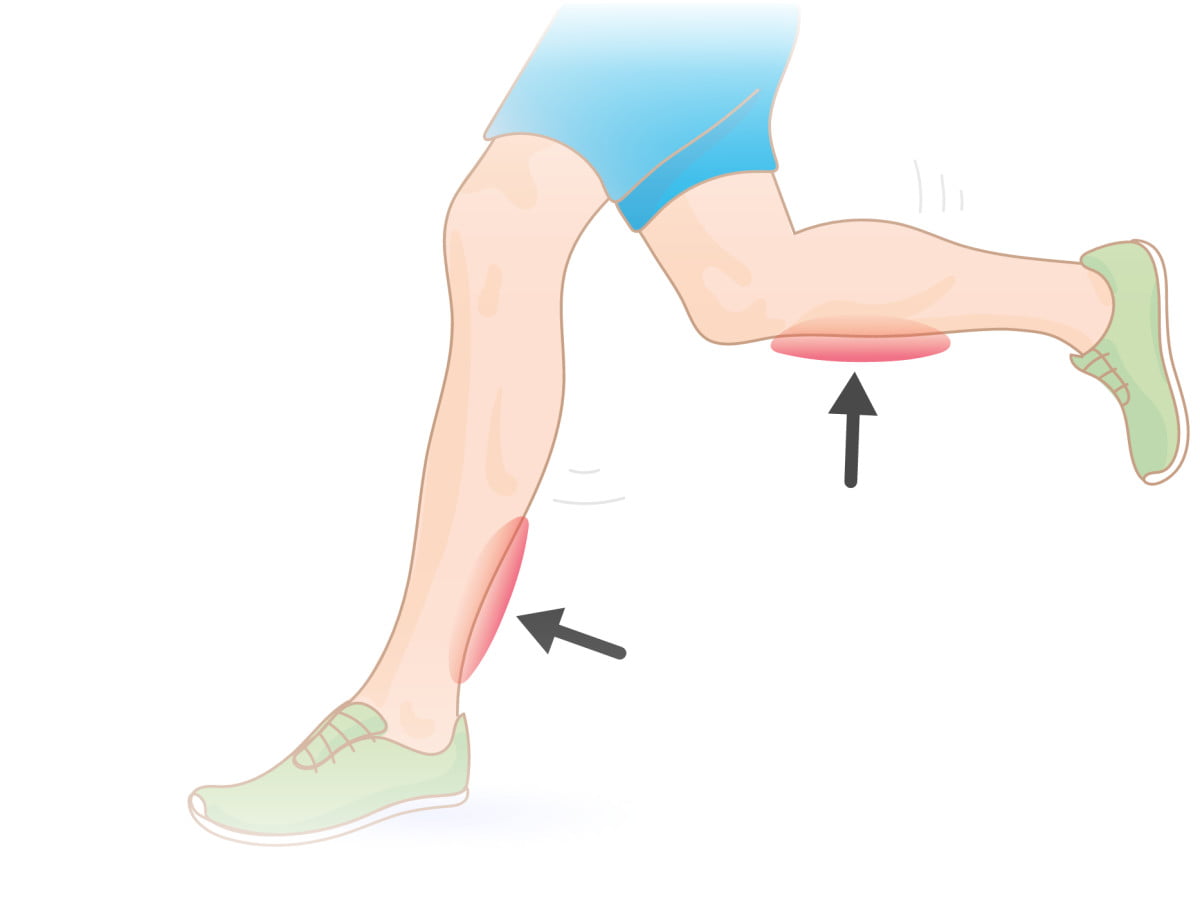Today We are Talking about ‘How to Manage Ankle Pain Running After a Run’ manage ankle pain after running, practice RICE: Rest, Ice, Compression, and Elevation. Ankle pain is a common complaint among runners and can be caused by various factors such as overuse, ankle sprains, or improper footwear.
It can hinder your ability to run and even lead to more serious injuries if not addressed properly. Fortunately, there are effective ways to manage ankle pain after a run. This article will provide tips on how to alleviate discomfort by following the RICE method and share some additional measures you can take to prevent ankle pain in the future.
By taking the appropriate steps, you can continue to enjoy your runs and keep your ankles healthy and pain-free.
Causes Of Ankle Pain After Running

Ankle pain after running can be attributed to a variety of causes. Overuse and repetitive stress on the ankle joint can occur when runners push themselves too hard or increase their mileage too quickly. Incorrect running form and technique, such as striking the ground with the heel first or overpronation, can put additional strain on the ankles. Weak ankle muscles and lack of mobility can also contribute to pain and discomfort, as they are unable to provide adequate support during the running motion.
Ankle Strengthening Exercises
The key to managing ankle pain after a run is to focus on ankle-strengthening exercises. These exercises can help improve the strength and stability of the ankle joint, reducing the risk of pain and injury.
| Calf raises and stretches: | Perform calf raises by standing on the edge of a step or a stable surface with the heels hanging off. Slowly raise and lower your body using the calf muscles. Additionally, stretch your calves by placing your hands on a wall and stepping one foot back, keeping both feet flat on the ground. |
| Ankle circles and alphabet exercises: | Rotate your ankles in small circles clockwise and counterclockwise to improve mobility. You can also trace the alphabet with your toes to engage the muscles around the ankle. |
| Resistance band exercises for ankle stability: | Wrap a resistance band around the ball of the foot and perform exercises such as dorsiflexion, plantar flexion, inversion, and eversion. These exercises target the muscles that support the ankle. |
| Balance and proprioception exercises: | Try standing on one leg for a short period of time while maintaining balance. You can also incorporate uneven surfaces or balance boards to challenge your stability. |
By regularly incorporating these ankle-strengthening exercises, you can help prevent or manage ankle pain after running, allowing you to continue enjoying your runs pain-free.
Proper Running Shoes And Gear
Proper running shoes and gear play a crucial role in managing ankle pain after a run. Finding the right running shoes is important as they provide the necessary support and cushioning to minimize impact on the ankles. Considering your foot type and undergoing a gait analysis can help determine the most suitable shoes for your running style and level of pronation. This ensures proper alignment of the feet and reduces the risk of ankle pain.
Ankle supports and braces can also be beneficial in managing post-run ankle pain. They provide additional stability and compression to the ankle joint, reducing inflammation and preventing further injury. Ankle supports and braces can be especially helpful for individuals with weak or unstable ankles. They offer the necessary support to keep the ankle properly aligned and protected during running activities.
How to Manage Ankle Pain Running After a Run-Tips For Preventing Ankle Pain
Managing ankle pain after a run is essential to ensure a healthy and enjoyable running experience. One of the key tips to prevent ankle pain is to gradually increase the intensity and duration of your runs. This allows your muscles and joints to adapt and become stronger over time. Incorporating rest days into your training schedule is also crucial, as it gives your body time to recover and heal. Additionally, engaging in cross-training activities, such as swimming or cycling, can help to reduce the strain on your ankles and promote overall fitness.
Regular stretching and foam rolling exercises are important for maintaining flexibility and reducing tightness in the ankle area. These exercises can help to improve blood circulation and prevent muscle imbalances that may contribute to ankle pain. Before starting a run, be sure to warm up properly by performing dynamic stretches and movements. Cooling down after your run with static stretches can aid in the recovery process and decrease post-run soreness. By following these tips, you can manage ankle pain effectively and continue to enjoy your running routine.
Immediate Relief And Recovery Strategies
Immediate relief and recovery strategies are crucial for managing ankle pain after running. One effective method is the RICE technique: rest, ice, compression, and elevation. Resting the affected ankle helps prevent further injury and allows for healing. Apply ice to the area for 15-20 minutes multiple times a day to reduce inflammation and swelling. Compression, such as using an elastic bandage or brace, can provide support and minimize swelling. Elevating the ankle above heart level also helps reduce swelling and promotes blood flow.
Alongside the RICE method, nonsteroidal anti-inflammatory drugs (NSAIDs) can be used to relieve pain and reduce inflammation. Topical pain relief creams may also provide temporary relief. However, it is important to seek professional medical advice and treatment for persistent or severe ankle pain. A healthcare professional can properly diagnose the underlying cause and recommend appropriate treatment options.
In addition to immediate relief strategies, rehabilitation exercises play a key role in ankle recovery. Strengthening exercises, such as calf raises and ankle circles, help stabilize the ankle and improve flexibility. Balance and proprioception exercises, like standing on one leg or using a balance board, can enhance stability and prevent future injuries. Gradually increasing the intensity and frequency of these exercises can aid in the long-term management of ankle pain.

Credit: sydneyheelpain.com.au
Frequently Asked Questions For Ow To Manage Ankle Pain Running After A Run
Is It Normal For Ankles To Hurt After Running?
Yes, it is normal for ankles to hurt after running. Running puts strain on the ankle joints and muscles, leading to pain and discomfort. It is important to rest, ice, elevate the ankles, and avoid running until the pain subsides.
Stretching and strengthening exercises can also help prevent future ankle pain.
How Do I Prevent Ankle Pain When Running?
To prevent ankle pain when running:
1. Choose proper footwear with good ankle support.
2. Warm up before running and stretch your calf muscles.
3. Gradually increase your mileage and intensity.
4. Strengthen your ankles with exercises like calf raises and ankle circles.
5. Listen to your body and take rest when needed.
How Long Does Runner Ankle Take To Heal?
The healing time for a runner’s ankle varies, but it may take several weeks to several months to fully recover.
Conclusion
Effectively managing ankle pain after a run is crucial for runners to maintain their fitness and prevent long-term injuries. By following the tips and techniques discussed in this blog post, such as proper stretching, strengthening exercises, and rest, runners can alleviate discomfort and protect their ankle joints.
It is important to listen to your body, seek professional guidance if necessary, and prioritize self-care to ensure a healthy and enjoyable running experience.

1 thought on “How to Manage Ankle Pain Running After a Run”